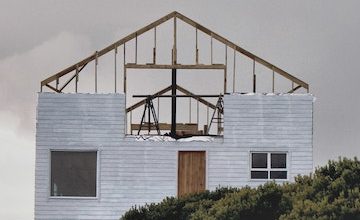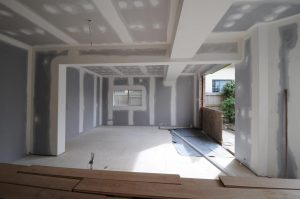[Video] Building Your Home: The Land & Construction Loan Process
Building your home can be a long and challenging process. This is in no small part due to the land and construction loan process. This guide outlines the journey you will go through. From purchasing the land to constructing your dream home. We will show you what to do at each step. What to ask for. What pitfalls to steer away from. We will then take you through different steps involved in applying for a land and construction loan.
Purchasing The Land
Buying a block of land on which to build your new home is the first and arguably most important step in the home building process. Keeping the following factors in mind can help you make the right choice.
Availability & Suitability
First of all, find out what is available in your ideal location and price range. Options include buying a block of land in a new estate or regional acreage or demolishing an existing property.
Make sure the lot is suitable for the kind of house you want to build. You should consider size, shape and orientation in relation to the sun, as well as how high it is above sea level if it’s in a flood-prone area or if it’s in an area prone to bushfires.
You may also want to get a geotechnical report to assess the soil type, which will tell you whether the site is suitable for construction. This may have a marked effect on the cost you’ll pay for construction.
Infrastructure
Consider the location and accessibility of important services and facilities such as:
- Power, water and sewage
- Stormwater drainage
- Telephone, gas and broadband internet lines
- Access to the property, including roads and public transport
- Education and healthcare facilities
- Parks and recreational activities
- Flood levels, landslip, buffer zones and other easements
Restrictions & Regulations
Local councils have rules and regulations that may affect what and how you build. This includes where on the lot you place your home, what kind of fencing you have and more. Make sure you find out what these council restrictions are before you buy the land, as well as details of any upcoming development applications that may increase or decrease the value of your home.
Ask yourself, why is the current owner of the lot you’re looking to purchase looking to sell?
Design Your Dream Home
Once a site is selected, you now need to go through the design process with your architect or designer. Your architect will help you come up with a design that is appropriate for your site. They will make sure the design is fully compliant with all of the local council’s rules, development and environmental controls. They will make sure your design can be built wihin your budget.
Your architect will guide you through the Development Application process. This is the process of seeking approval for building your new home from your local council.
It is advantageous to work with an architect or firm who has dealt with your local council in the past. This will ensure you can move through the Development Application process quickly, and hopefully avoid any unnecessary delays.
The Construction Process
Every construction process is unique and depends on the scope and complexity of the project. But each time a house is built, the process follows the typical steps below, and the principles are similar for smaller-scale projects like renovations.
Step 1: Choosing a Builder
Before you get to the stage of choosing a builder, your research and design process will have yielded finished design documents to put out for tender by builders.
There are two common ways to choose a builder are:
- Choose a preferred builder and invite them to prepare a quotation or “tender”. You can then seek an alternative quotation to ensure you are getting competitive pricing
- Call an open or selective tenders from a range of builders and choose on the basis of price mostly
Each method delivers a builder and a quotation but one emphasises the best price and the other, preferred builder. In either case, note in your tender documents that you are “not obliged to accept the lowest or any tender”.
Your architect or designer will help you choose builders to tender for a project, based on recommendations and past experience. Advertised open tenders deliver variable outcomes and often exclude smaller specialist builders who do not have time to tender for multiple projects.
Your choice of builder is almost as critical as your choice of designer.
The principal role of a builder is to coordinate the building works as a project manager. This role includes supervising and coordinating each trade; sourcing, quantifying and coordinating the delivery of materials; and, most importantly, quality-assuring the entire process.
Step 2: Tender Documents & Contracts
In projects being tendered by more than one builder, this step precedes Step 1.
Tender documents must clearly identify any sustainability practices or materials certification requirements that are different from business as usual practices. You need to attach schedules to the tender documents that tenderers are required to sign.
Allaying builder concerns about the unfamiliar aspects of sustainable practice can reduce the amount they allow for unknown contingencies.
Contracts
Standard home building contracts are available from many sources including lending authorities and industry peak bodies.
The building contract forms the basis of your legally binding agreement with your builder, and of any dispute resolution.
Choose a contract that strikes a reasonable balance between your needs and those of your builder. Clear dispute resolution provisions and nominated independent arbitrators are essential. Annex the builder’s tender, council approved plans and specifications, certified engineering details and any schedules (prime cost, contingency sums or nominated suppliers/contractors) to the contract.
Have your solicitor and designer review your building contract before signing.

Tendering tips to ensure best outcomes include:
- Drawings and specifications form part of the contract documentation. Ensure they clearly indicate any sustainability requirements and include penalties for the substitution of inferior materials and products
- Nominate important, high-cost items such as windows in a prime cost schedule to avoid substitution by competitive tenderers
- Clearly describe sustainable methods or materials that are not yet standard building practice and include advice on how to implement or source them
- Include unambiguous instructions that prevent changes or substitution without approval by you or your designer. This is a big source of disputes down the line
- Ask tendering builders to check tender documents for sustainability compliance risks and note or allow for any contingencies in their tender
- Ask builders to recommend alternative solutions that suit their trades and supply chains while delivering equal or improved outcomes for site-specific issues that may not arise often
- Try to use contracts that link payment to the achievement of specified outcomes (e.g. details of environmentally certified materials, window and glazing specifications, and reuse or recycling details).
- Develop a schedule of reusable materials (if you’re renovating or demolishing an existing house) and negotiate their reuse with your builder.
Step 3: Construction Supervision & Certification
Many opportunities to achieve best practice sustainable outcomes are lost during construction. This is often due to a lack of understanding of environmentally sound principles and practices by builders and tradespeople, or ineffective certification.
Supervision
Your builder is frequently called on to make decisions about materials and procedures that vary from those nominated in the plans and specifications due to trade preferences or unavailability of preferred materials. Builders refer these (often urgent) decisions to a supervisor for verification if one is nominated.
Well-informed advice from experienced professionals can quality-assure decision making and ensure best outcomes are achieved. Many designers offer a supervision service as part of their fee structure. Architects in some states are prevented from offering project management services.
If you adopt the supervisor role as owner, consult competent advisers or consultants to verify your decisions.
Project management or supervision adds substantial professional indemnity risk to a designer’s insurance profile so many designers prefer a less formal advisory role. You should sight a project management endorsement on a current professional indemnity policy before formally appointing a supervisor or project manager.
Certification
Inspection and certification of your project at critical stages is required by law to confirm that it is built in accordance with the approved plans, specifications, relevant Australian Standards, Building Code of Australia and council regulations, to ensure structural integrity, health, safety and amenity.
These inspections can identify and rectify problems or omissions before they are built-in. Reported instances of inadequate certification of sustainability compliance in several jurisdictions indicate that this important aspect is sometimes overlooked.
Step 4: Commissioning & Handover
Sometimes the best design and construction innovation can be wasted because the concepts aren’t communicated to the owner at handover. Ask your designer and builder for an owner’s manual at handover. If you sell your home make sure the new owners have a copy of this important document.
An owner’s manual or operation guide should cover:
- Summer and winter operation settings and day-night routines for:
- Maintaining & operating the heating and cooling appliances
- Operating and maintaining ventilation systems (cross and stack)
- Operating any shading systems. These may have a marked effect on your power consumption
- Operating roof space ventilator
- Cleaning of solar appliances
- Termite barriers and inspection schedule
- Operating guides for water harvesting and treatment systems
- Isolation valves for building services (gas, electricity and water)
- Hot water system sacrificial anode replacement date
- Hot water system pressure relief valve checks
- Painting intervals
- Appropriate cleaning products for all surfaces and finishes
- Landscape maintenance requirements.
Pitfalls To Avoid
Common causes of disappointment or disputes emerge from choosing the wrong designer or builder, or both. Pick wisely when choosing both professionals initially.
Budget overruns can arise from circumstances within or beyond your control:
- Preliminary cost overruns. These include extra council fees, design, geotechnical reports, engineering design and certification, surveyor fees and so on
- Site challenges. Unforeseen site difficulties are one of the biggest pitfalls when dealing with irregular or sloping sites
- Weather. Very little of the building process can be carried out in wet weather
- Materials unavailability
- Not ‘nailing’ the details. This includes materials selection or finishes
- Receiving/accepting poor advice (particularly from suppliers and inexperienced tradespeople) when urgent decisions need to be made. This is why the supervisor role is extremely important
Time overruns are the second major pitfall. Very few new design/build projects fit within the client’s timeline expectations due to:
- Council delays
- Lengthy design processes — particularly when many changes are made
- Delays finding an available builder
- Weather and builder related delays
- Tradespeople shortages
- Availability and delivery of materials or technology that are outside the builder’s normal supply chain.
You need to be able to negotiate reasonable, equitable compromises throughout the design and construction process.
The Land & Construction Loan Process
The land and construction loan process is the process you will use to finance the purchase of land and building of your new home.
What Is a Land and Construction Loan?
The mortgage market is flooded with different kinds of home loans. And in case you plan to build your own home, a traditional home loan may not be the best option for you.
Many lenders offer special land and construction loans that are tailor-made for borrowers constructing their own home and can help you save significantly over the life of the loan.
How Does a Land and Construction Loan Work?
A land and construction loan is a specially designed product offering progressive payments in line with different stages of construction.
Interest is generally charged only on the amount drawn down, which means you are only paying interest on the part of the loan you are actually using.
When building a home, you do not need the full amount at one go. A construction loan allows you to drawdown progressive payments according to the stages of construction. There are five stages of construction that are usually considered:
- Purchasing the land – You’ve purchased the site you will build on
- Base/Foundation – The foundations for your building are completed
- Roof (including frames) – Your home is weatherproof or thereabouts
- Fittings – Internal finishes are done
- Completion – The home is ready for habitation
Once a stage of construction is completed, you can request the next drawdown. A valuer accredited by the Bank will check the property to ensure the work has been completed according to the specifications in the building contract before the lender approves the next drawdown.
This scores a double whammy for the borrower – low interest (as it is only calculated on the amount withdrawn instead of the full approved amount) and a valuer double-checking the quality of work done by the builder.
How To Apply For a Land and Construction Loan?
Before you apply for a land and construction loan, it is important to choose a builder. A signed building contract with an approved builder is a pre-requisite for having your construction loan approved.
Usually, lenders will let you borrow up to 90-95% of the total cost but being backed by a parental guarantee you can borrow up to 100% of the total cost. However, it is always best to have some savings for any unforeseen expenses. You can also consider a small line of credit to meet additional expenses during the construction process.
Apart from the regular documents you need to apply for a home loan, the following documents are needed before you apply for a land and construction loan:
- Council approved building plans
- Signed building contract with an approved builder
- Copy of builder’s license and insurance policy
- Quotes for additional works you may need to pay for such as landscaping
Please keep in mind, the lender will take into account the cost of the land as well as the construction costs to determine the loan amount. A valuer will assess the on-completion value of the house. The lender will take into account the lesser of the land value and construction costs and the on-completion value of the house for approving the loan amount.
It is best to avoid building the nicest house on the street. Unless you are not borrowing a lot of money compared to the on-completion value of the home.
Things To Keep In Mind
There are a number of things to watch out for when you are applying for your land and construction loan. Mainly:
1. First Home Owners Grant (FHOG)
Many states offer incentives to first home buyers and those constructing on vacant land. Have you checked your eligibility for a state grant?
[Video] The Different First Home Buyer Assistance Schemes Explained
2. Finance Clause
Having a finance clause inserted in your building contract can help you buy time to find a suitable loan. The finance clause allows you to take the land off the market for a stipulated period while you organise your land and construction loan.
3. Quote For Additional Work
Including quotes for additional works such as landscaping, construction of swimming and other works in your original building contract can ensure you have finance handy for these home improvements. Making changes to your building contract after the loan is approved may require you to apply for the loan all over again.
4. Contact An Expert
Getting in touch with an expert mortgage broker can save you tons of money and time and help you find the most suitable home loan for your situation. A good broker will help you steer deftly through a complicated mortgage market. A good mortgage broker will answer all your home loan queries at no cost to you.
Your Mortgage Broker is paid (the same amount) by the Lender you choose to borrow from
About The Author
Mark Walker is OneSite Finance’s Customer Services Manager. He brings 2 decades of financial services experience specialising in residential housing and mortgages.
Mark has worked with a number of mortgage broking companies over the years. He’s held roles ranging from Mortgage Broker as well as Loan Assessor and Loan Applications Manager.
Mark loves to create great customer journeys and is always looking to provide 10/10 customer experiences.






